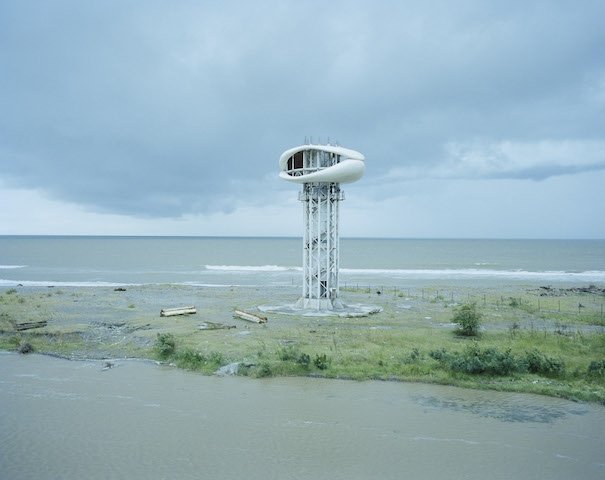A small black-and-white photomontage depicting a female scientist hangs on the wall in the entrance corridor of the former Faculty of Biology at the University of Latvia. A similar image appears, with a corresponding plaque, just before the second room I enter. Having breezed past these pictures, I only realise midway through the venue’s maze of rooms and stairwells that the series is, in fact, part of the exhibition rather than a remnant of the building’s past. In seven images and accompanying texts, Kerstin Hamilton’s The Science Question in Feminism (2018) brings female physicists, chemists and biologists to the fore and tells their stories, often highlighting gender inequality within science. Lidija Liepina, for example, helped develop the first Russian gas masks during the First World War and became the first Latvian woman to receive a PhD as well as the first woman to become a professor in the USSR.
Like Hamilton’s project, the first edition of RIBOCA – which showcases over 90 international artists and spans seven further venues in Riga and Jūrmala – has women at the helm: founder Agniya Mirgorodskaya and chief curator Katerina Gregos. Gender equality is only one of many subtopics presented within the overarching theme of ‘change’ that Everything Was Forever, Until It Was No More aims to explore. The Faculty of Biology addresses the human relationship to the natural world; the ex-residence of Kristaps Morbergs, a twentieth-century Latvian patron of the arts, investigates the collective historical memory; a disused factory, which now hosts tech startups, considers the presence of unseen technologies. Each location might have a narrower focus than the whole, but for an exhibition that deals with change, and so might be expected to disrupt the status quo, the thematic groupings and their placements appear all too literal.
Projected onto the front wall of a classroom in the Faculty of Biology, Mindy, the protagonist of Sven Johne’s video A Sense of Warmth (2015), talks about how she escaped the capitalist, digital workforce to become an ornithologist. Although Johne’s work addresses ecological shifts caused by human action, when placed in this context it could also be seen as an instructional video on how to track birds’ migration patterns in order to capture and dissect them. Similarly, peeling wallpaper in Morbergs’s apartment partially reveals images of Soviet landscapes. An unfinished and abandoned viewing tower in Anaklia, Georgia, looms adjacent to one doorway, while fragmented missiles launch above another and illegible red graffiti covers a wall. Titled Lost Territories Archive (2016–18) by the collective Sputnik Photos, the site-specific installation shows the dilapidation and transformation of post-Soviet regions, yet might appear as the work of trespassing vandals. The residence itself is figured as a site of change.
Inside the repurposed factory, now named Sporta2, hang ten photographs by Trevor Paglen depicting undersea cables covered in algae and grime, making visible the obscure infrastructure of our global network. These are perpendicular to Ivar Veermäe’s nine-channel video installation, Center of Doubt (2012–16/2018), which similarly traces the transmission of digital information by presenting satellite images of Google, Microsoft, Apple, Facebook and Amazon’s data-storage centres. The works here shed light on subjects normally kept in the shadows, but when considering the hyper-networked startups headquartered next door, they could be seen as didactic visuals for young developers.
Ecological, political and societal changes, particularly those aided by technology, as Gregos writes in a catalogue essay, might begin as novelties but quickly become integral to daily life. Their effects, however, ‘are both too profound and too fast for us to really grasp… without great stress and anxiety’. And, indeed, the biennial traverses topics so vast that the treatment of each appears rushed and anxious. This isn’t to say that the artworks in and of themselves aren’t thought-provoking, but rather that the curatorial aim was perhaps too broad.
Riga International Biennial of Contemporary Art (RIBOCA): Everything Was Forever, Until It Was No More at various venues, Riga, 2 June – 28 October
From the September 2018 issue of ArtReview
